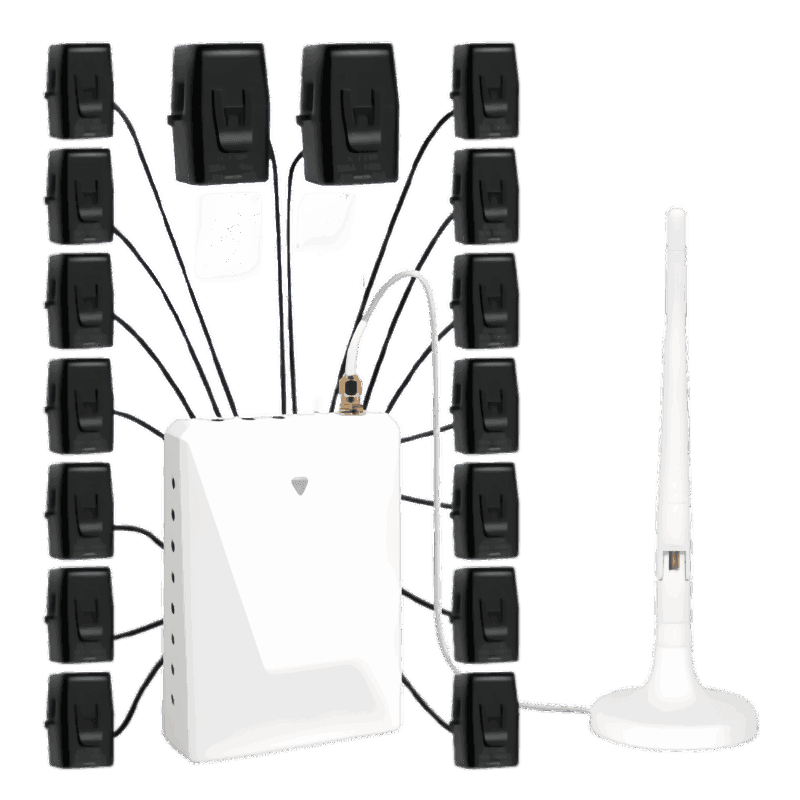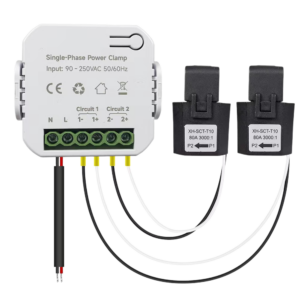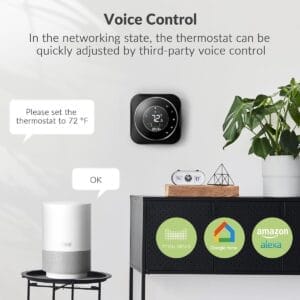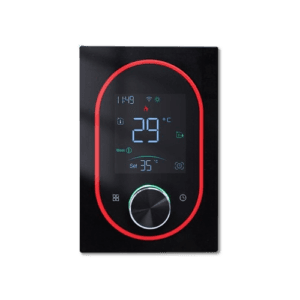スマートベースボードサーモスタットの設置EcoNet-BHallows farmers to maintain optimal barn temperatures automatically, reducing energy costs and improving animal health all year round.
- Smart thermostats provide precise heating for poultry and swine barns, using digital sensors and automated control to balance comfort with efficiency.
- 電力消費を最大で25%環境を安定させ、農家が WiFi 経由で遠隔で納屋を監視できるようにします。
- と組み合わせるとWattPanel-2X, energy data becomes visible, measurable, and actionable — turning every barn into a smart, data-driven zone.
現代の畜産農場のエネルギーの現実
Across North America and Europe, livestock operations are facing rising energy costs and growing climate challenges.
ベースボードヒーターや輻射ヒーターを備えた2,000平方フィートの鶏舎1棟あたり、12,000kWh/月冬の間。
Inconsistent thermostat performance often leads to over-heating or under-heating, which not only wastes energy but also stresses the animals.
鶏や豚は、微少な温度変化に特に敏感です。
- A1℃の低下快適レベルを下回ると、飼料変換効率が低下する。3~5パーセント.
- 過熱は家禽の死亡率を増加させる可能性がある。最大8パーセント特に初期の抱卵期間中に顕著です。
- Poor airflow and temperature imbalance may lead to condensation, respiratory issues, and ammonia buildup.
出典: ミネソタ大学エクステンション、2024年。
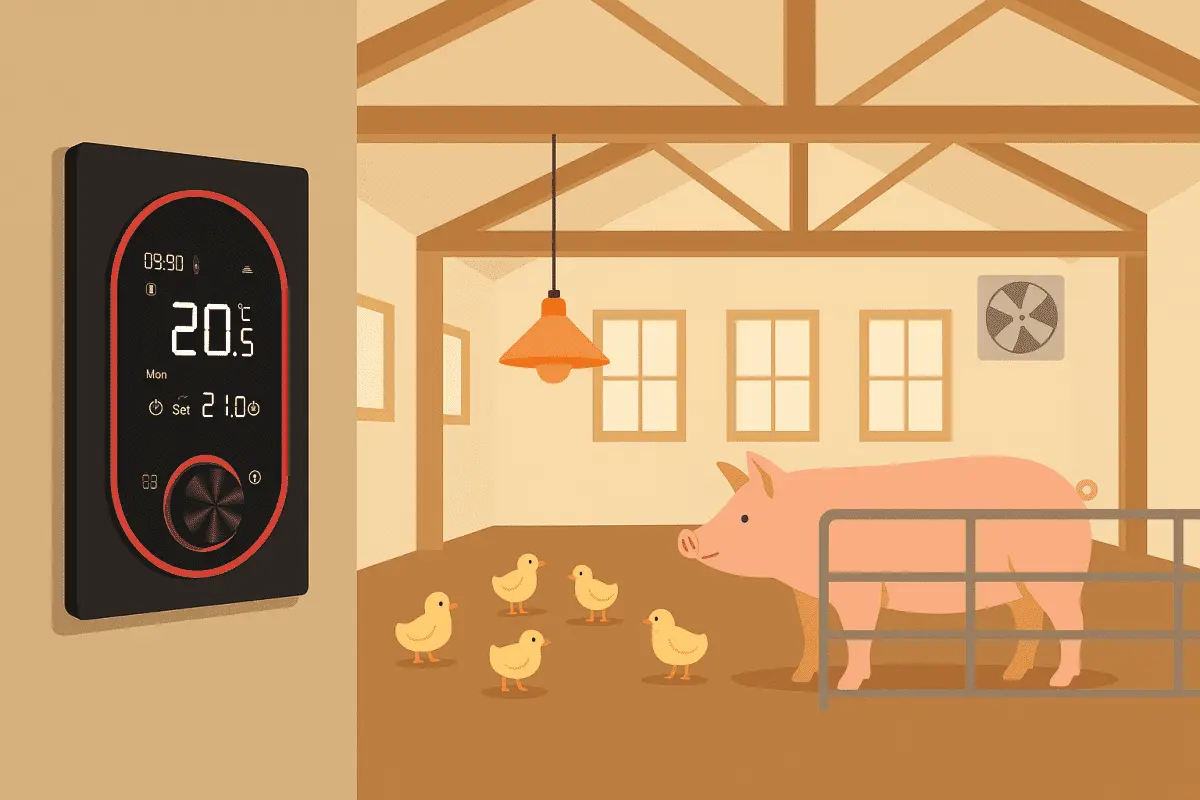
Traditional thermostats in barns rely on bimetallic sensors or mechanical relays that react slowly to changes in air temperature.
通風の影響を予測したり、ゾーン間の加熱の不均一を修正したりすることはできません。
This often forces farmers to set higher target temperatures as a safety margin — wasting energy and creating inconsistent growth conditions.
スマートベースボードサーモスタットが新たな標準となる理由
スマートベースボードサーモスタットEcoNet-BH安定した熱が生産性につながる精密環境向けに特別に構築されています。
単純なオン/オフ制御の代わりに、このデバイスはパルス幅変調(PWM)短く適応的な電流バーストを供給します。
This keeps temperature oscillation within ± 0.3 °C, far tighter than analog thermostats that fluctuate by up to 2 °C.
各ユニットは 2 秒ごとに空気の温度を測定し、部屋の熱慣性を学習します。
That means it can “predict” how much heat is needed before the temperature drops too low — similar to how smart home thermostats optimize comfort in houses, but engineered for barn conditions.
The device is line-voltage compatible (120 V / 240 V), waterproof-sealed, and designed to operate under high humidity.
両方を制御できる抵抗ベースボードヒーターand赤外線暖房パネル現代の畜産施設でよく見られる。
“When we switched to EcoNet-BH, we stopped playing the guessing game. The temperature graphs finally looked smooth,” says M. Delgado, a broiler producer in Iowa.
畜産施設における温度管理の課題
さまざまな畜産エリアにわたって快適ゾーンを維持することは技術的な課題です。
3つの典型的な例を見てみましょう。
| 動物グループ | 最適範囲(°C) | 典型的なヒーター負荷 | 暖房チャレンジ |
|---|---|---|---|
| ブロイラーのひよこ(1~14日) | 32 – 35 °C | 2~3kW / 100平方フィート | 換気サイクル後の急激な温度低下 |
| 子豚(1~4週間) | 27 – 30 °C | 1.5~2kW / ペン | 不均一な加熱、冷たい角 |
| 乳牛の子牛舎 | 10 – 18 °C | 4~5kW / ストール | 部分的に開いた納屋の暖かさを保つ |
EcoNet-BHこれらすべての問題を解決するのに役立ちます。
- 適応制御電流消費と空気温度の両方を感知します。
- ゾーングループ化複数のサーモスタットが接続された納屋間で読み取り値を同期できるようになります。
- 履歴データログ熱損失エリアや故障したヒーターを特定するのに役立ちます。
スマートゾーニングとエネルギー最適化
In large operations, different barns or rooms demand different temperature profiles — breeding, nursery, farrowing, and grow-out.
EcoNet-BHはサポートしていますマルチゾーン管理経由でGrus スマートアプリ農家が温度帯とスケジュールを定義できる。
例えば:
- ゾーン 1 (「育雛 A」) は、午前 6 時から午後 10 時までは 34 °C、夜間は 32 °C に設定できます。
- Zone 2 (“Grow-Out B”) runs at 29 °C day and night, with a 1 °C buffer for ventilation recovery.
- ゾーン 3 (「保管エリア」) は、パイプの凍結を防ぐために 18 °C に制限されます。
When outdoor temperature sensors show a cold front approaching, the system automatically pre-heats critical zones, preventing the thermal dip that usually happens at dawn.
このレベルの制御にはかつては複雑な PLC が必要でしたが、今ではスマートフォンやタブレットから実行できます。
農家はWattPanel-2XEcoNet-BH と組み合わせると、リアルタイムの回路負荷を表示できます。
If a heater draws less power than expected, the system can flag possible relay or wiring issues before animals are affected.
graph TD A[Outdoor Temperature Sensor] --> B[EcoNet-BH Smart Thermostat] B --> C[Baseboard Heater Output] B --> D[Grus App Dashboard] D --> E[WattPanel-2X Energy Monitor] E --> F[Farm Manager Adjustments & Reports]
エネルギー増加の定量化
カナダの養鶏場5か所を対象とした3か月間の調査(2024年)で次のことが明らかになりました。
| 農場 | サイズ | コントロールタイプ | エネルギー使用量(kWh/月) | スマートアップグレード後 | 貯蓄 | 平均温度安定性 |
|---|---|---|---|---|---|---|
| A | 1,500平方フィート | アナログ | 10,900 | 8,450 | 22.5% | ± 0.4 °C |
| B | 2,000平方フィート | 手動リレー | 12,300 | 9,880 | 19.7% | ± 0.5 °C |
| C | 1,800平方フィート | ハイブリッド | 11,200 | 8,750 | 21.9% | ± 0.3 °C |
The reduction in heating variation translated directly into better flock uniformity and feed conversion.
農場では、空気の流れがバランスよくなったことで湿度レベルが低下したとも報告されています。
出典: Grus フィールドデータレポート、2024 年。
ケーススタディ:オンタリオ養鶏場
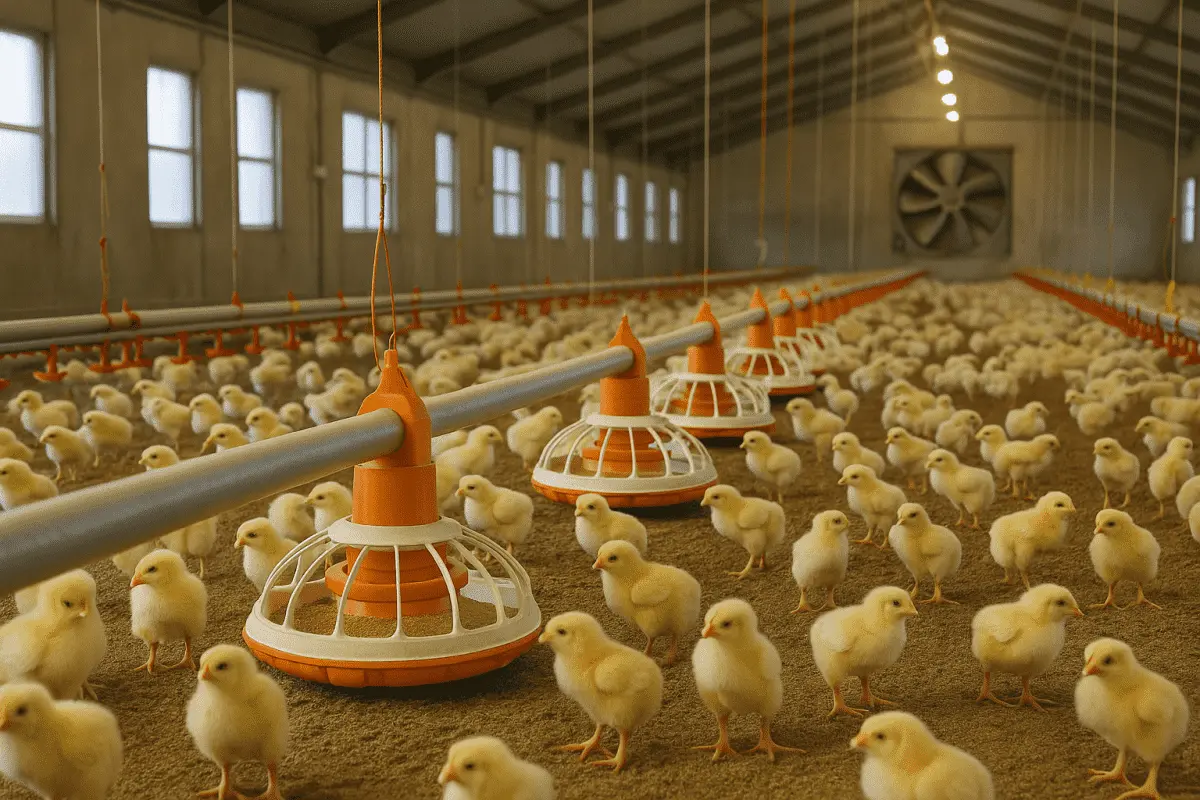
オンタリオ州にある8つの納屋と24台のヒーターを運営する農場のオーナーは、EcoNet-BHユニットは WiFi 経由で中央ダッシュボードにリンクされます。
この変更により、長年気づかれなかった非効率性がすぐに明らかになりました。
- サーモスタットの配置が不適切だったため、2 つのヒーターのサイクル時間が 30% 長くなっていました。
- 古いセンサーの遅延により、納屋の端のセクションは 3 °C 過熱されました。
- 月間総エネルギー使用量は31MWhから24.6MWh6週間以内に。
さらに重要なのは、農場が成長率が15%向上ブロイラーのバッチでは、温度が一定に保たれ、快適です。
“We used to adjust thermostats by walking to each barn — now we do it from the truck. It’s made management more data-driven and less guesswork.” — J. McLaren, Ontario Poultry Owner
農場自動化システムとの統合
EcoNet-BHは、以下を含む主要な自動化プラットフォームと互換性があります。ホームアシスタント,Google ホームそしてGrus クラウドAPI.
自動化スクリプトを通じて、農家はシステム間のアクションをトリガーできます。
- CO₂ > 1,200 ppmの場合 → 換気ダンパーを開き、ヒーター出力を10%下げます。
- 電力コスト(TOU 料金)が急上昇した場合 → 予熱をオフピーク時間に切り替えます。
- 屋外温度が-10℃未満の場合は、「霜ガードモード」が自動的に有効になります。
この柔軟性は、スマートホーム技術と精密農業を結びつけるものであり、これは「「スマートバーン統合」
実践的な設置ガイドライン
- 場所– 動物の高さ(ひよこの場合は 1 メートル、豚の場合は 1.5 メートル)にサーモスタットを設置します。
- 湿気対策– 密閉された導管と防水接続ボックス(IP65 定格)を使用します。
- 較正– 設置後、24 時間の安定化期間を実行して、熱応答を微調整します。
- アプリのセットアップ– 管理を容易にするために、各ゾーンに明確な名前を付けます (「育雛箱 1」、「母豚小屋 2」など)。
- データレビュー– Grus アプリで回路の異常や温度ドリフトがないか毎週確認してください。
インストールには通常、ユニットあたり 20 分未満しかかからず、中央ハブは必要ありません。
完全なセットアップの詳細については、EcoNet-BHスマートサーモスタットについて詳しくはこちら→
よくある質問
Q1. EcoNet-BH は畜舎の埃や湿気に対処できますか?
A1.Yes. The enclosure uses moisture-resistant materials and an internal temperature-compensated sensor for accuracy.
Q2. 他のGrus システムでも動作しますか?
A2.シームレスに統合WattPanel-2Xエネルギー追跡とAquaNet水の安全性を監視するため。
Q3. WiFiなしでも管理できますか?
A3.ローカル コントロールはオフラインでも機能し、接続が再開されると設定は自動的に同期されます。
Learn how baseboard, heat pump, and HVAC smart thermostats work — plus setup tips and energy-saving strategies.
Read the Smart Thermostat Heating Guide →家畜暖房の未来はスマート制御から始まる
農業分野は急速にデータ駆動型環境制御.
Energy is no longer just an expense — it’s a variable that can be optimized, measured, and automated.
スマートサーモスタットEcoNet-BH監視システムと組み合わせて、WattPanel-2X、これまでアナログのダイヤルの背後に隠れていたものを農家に完全に可視化します。
By merging precision heating with real-time analytics, farmers can achieve higher productivity, lower emissions, and better animal welfare — all without sacrificing simplicity.
AtGrus.io、その使命は明確です。
to empower farmers with tools that transform barns into intelligent, responsive environments where comfort, sustainability, and efficiency work together.
From poultry houses in Ontario to pig nurseries in Iowa, the future of livestock heating has already begun — and it’s smart, connected, and powered by Grus.
